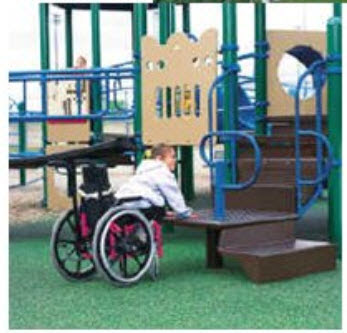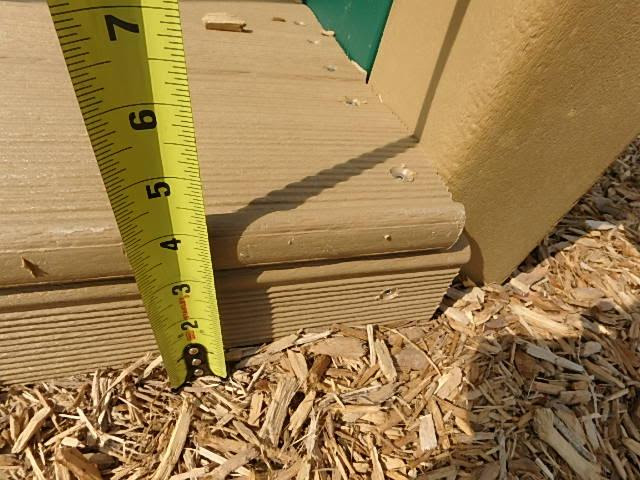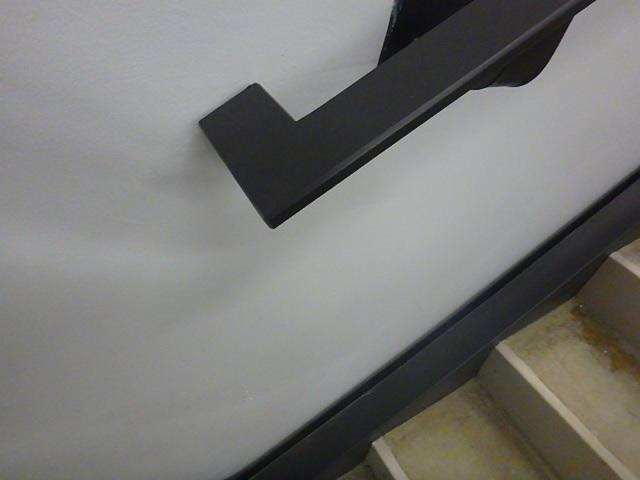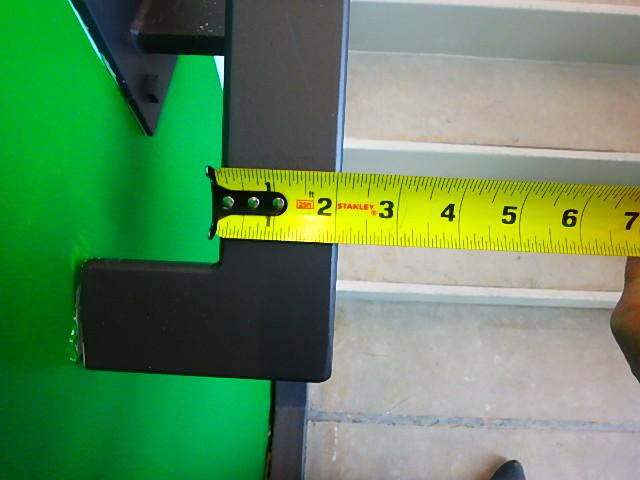Inspector’s Corner
Posted on - Tuesday, September 4th, 2018|
It’s been a while since I have shared some of my inspection stories with you. Below are a few interesting things I have found during my last few inspections.
Children’s play areasAt one of my inspections recently, there was a children’s playground equipment that provided a transfer step for children that allows children with disabilities to transfer onto the steps
The child would place his or her wheelchair next to the transfer platform or step and climb onto the steps.
In order for the child to be able to climb on, the platform must be a minimum of 11″ above the ground and no higher than 18″.
But in my inspection, the platform was covered in mulch and it did not get any higher than 4″ above the ground
|
Does a curb ramp need a landing at the bottom?When we think of ramps, one of the things we think of are landings at the top and bottom of the ramp run. But a curb ramp, even though it is a ramp, does not have the same requirements as a ramp that does not cross a curb. For more details on the different requirements between a ramp and a curb ramp, you can read my past newsletter on that topic by clicking the link.
A curb ramp does have a requirement for a type of landing at the top of the ramp, but not at the bottom. And the landing that is required at the top of the curb ramp does not have to have a slope of 1:48 in all direction nor does it have to be 60″ in depth
But a curb ramp is not required to have a landing at the bottom. So the photo below shows a curb ramp and the area at the bottom is not a landing, therefore it can be less than 60″. It should probably be 48″ since that is the minimum clearance for a wheelchair, but it is not specifically required.
|
Non-circular handrailsThe 2010 ADA Standards, as well as the 2012 TAS and the ANSI A117.1, allow handrails shape to be non-circular.
I had an inspection recently where the handrail wasn’t circular in shape, but it was completely flat. I did a double take and wondered if that was acceptable. But according to the standards which states:
505.7.2 Non-Circular Cross Sections. Handrail gripping surfaces with a non-circular cross section shall have a perimeter dimension of 4 inches (100 mm) minimum and 6¼ inches (160 mm) maximum, and a cross-section dimension of 2¼ inches (57 mm) maximum.
So as long as the perimeter was a minimum of 4″ then and the cross section 2 1/4″ maximum then it would be compliant.
The handrail I inspected was 2″ wide, therefore it was technically compliant
|
 Abadi
Abadi 









